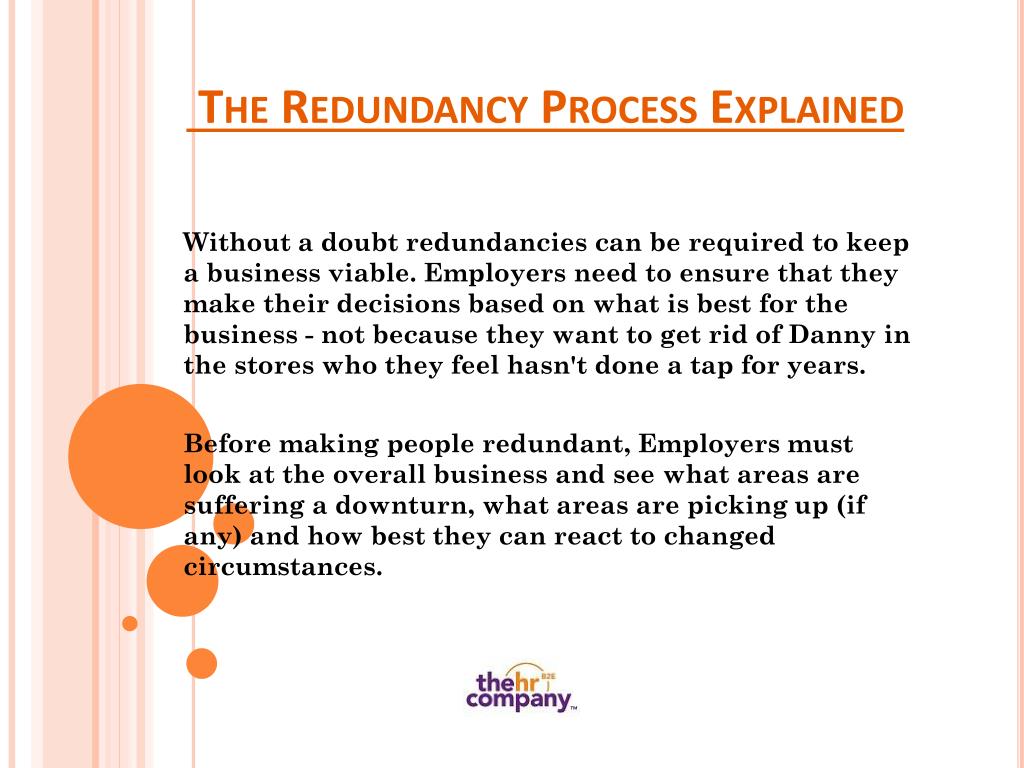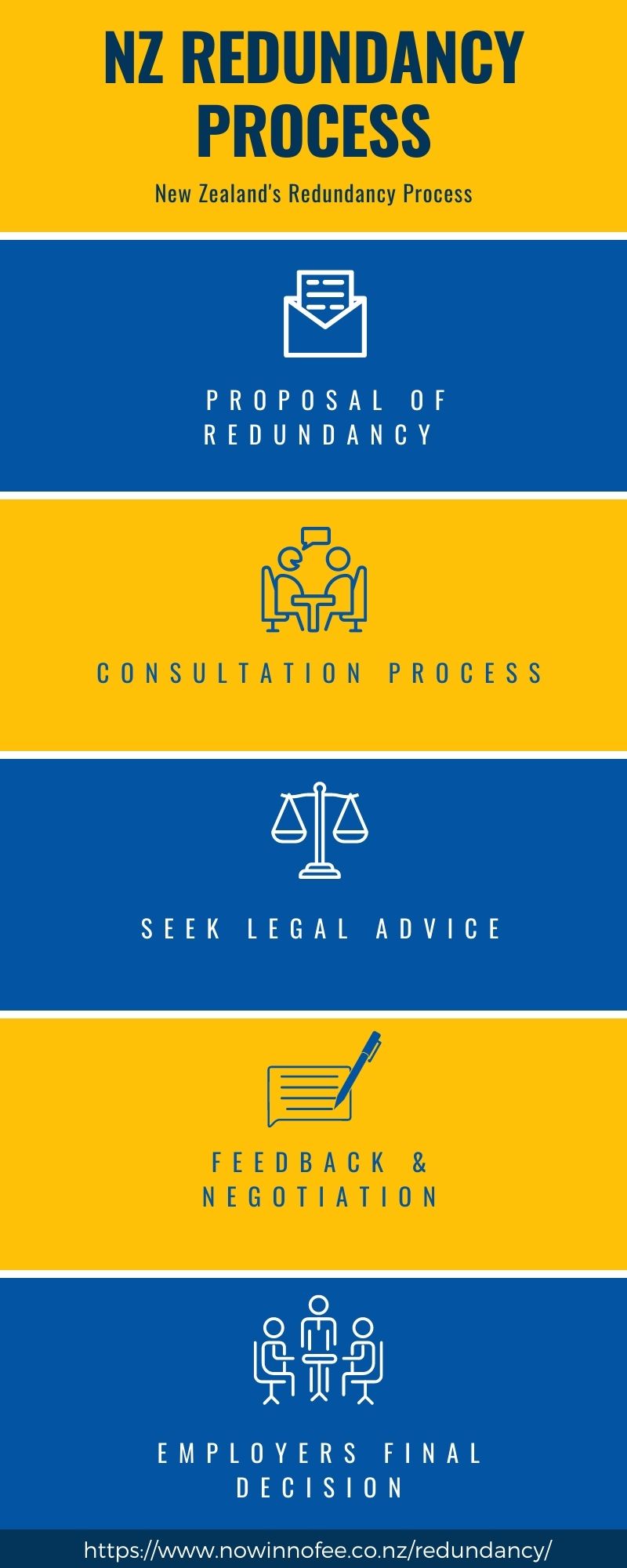How to Handle Redundancy Pay If Company Goes Bust: Key Details for UK Employees
How to Handle Redundancy Pay If Company Goes Bust: Key Details for UK Employees
Blog Article
Investigating the Interplay Between Business Redundancy and Business Versatility for Future Development
In the vibrant landscape of today's service world, the detailed connection in between company redundancy and organizational versatility arises as an essential aspect for continual development and success. Business often face the difficulty of striking a fragile equilibrium in between keeping a degree of redundancy to minimize risks and promoting versatility to react quickly to the ever-evolving market needs.
Relevance of Firm Redundancy
Company redundancy is an essential aspect that enhances organizational durability and alleviates functional dangers. By integrating redundancy procedures within the business structure, firms can much better hold up against unforeseen disruptions and variations in business setting. Redundancy acts as a critical barrier, enabling business to adapt and respond effectively to unexpected difficulties without compromising important operations.
One key aspect of the importance of firm redundancy is its role in guaranteeing continuity during times of crisis. When encountered with sudden adjustments or emergency situations, redundant systems, resources, or workers can action in to keep vital functions and avoid widespread disturbances. This connection not just safeguards the company's reputation and consumer count on but additionally lessens financial losses and functional downtime.

Strategies for Organizational Adaptability

One more crucial method is spending in technology and framework that can support flexibility and scalability. Executing digital tools, automation, and information analytics can enhance procedures, enhance performance, and give valuable insights for informed decision-making. Furthermore, creating adaptable organizational structures that permit fast changes to market characteristics and consumer demands is essential for staying affordable in a swiftly advancing setting. By proactively recognizing possible disruptions and chances, companies can proactively adjust and flourish in an ever-changing company landscape.
Harmonizing Redundancy and Adaptability
Achieving a harmonious stability in between operational redundancy and organizational flexibility is paramount in browsing the complexities of a dynamic service environment. Redundancy within a business provides a safeguard, making certain continuity and stability in procedures. However, an excess of redundancy can lead to inefficiencies and hinder adaptability to altering market problems. On the other hand, organizational versatility enables firms to react without delay to external disruptions and take brand-new opportunities. Striking the ideal balance in between redundancy and versatility is a fragile process that calls for a deep understanding of the organization's objectives, sector characteristics, and danger tolerance.
To accomplish this balance, business require to carry out normal assessments of their operations to determine areas where redundancy is essential useful site for danger mitigation and where adaptability can drive innovation and growth. Implementing adaptable frameworks, promoting a culture of continual understanding and renovation, and motivating open communication throughout all levels of the company are essential strategies to balance redundancy and adaptability successfully. By aligning these two crucial elements, companies can place themselves for sustainable growth and success in an ever-changing company landscape.
Instance Studies on Adjustment Success
In taking a look at circumstances of effective business adaptation, it ends up being noticeable that the interplay between operational redundancy and flexibility is a defining consider shaping resilient organizations. One engaging study is that of Netflix. At first a DVD rental service, Netflix demonstrated remarkable adaptability by transitioning into a streaming system when digitalization interfered with the market. By purposefully spending in modern technology and content creation, Netflix not only thrived yet endured in a quickly progressing market. One more standout example is Amazon. Starting as an on the internet bookstore, Amazon constantly adjusted its service design, increasing into varied markets such as cloud computing and synthetic knowledge. This flexibility permitted Amazon to remain ahead of rivals and fulfill transforming consumer needs. Lastly, Adobe supplies a notable illustration of successful adjustment. The business shifted from offering software licenses to a subscription-based design, making sure persisting profits streams and enhanced consumer interaction. These instance research studies emphasize the importance of operational redundancy coupled with organizational versatility in promoting lasting growth and competition.
Structure Strength for Future Growth
Structure strength for future growth needs a calculated positioning of operational processes with market characteristics and arising trends. Business need to adapt to transforming settings by fostering a society of adaptability, development, and continuous improvement.
Moreover, cultivating strong partnerships with stakeholders, such as customers, staff members, vendors, and the neighborhood, is important for weathering unpredictabilities and maintaining trust and support throughout unstable times. Reliable interaction and transparency play an important duty in building strength, as they aid help with and straighten assumptions collaboration in browsing uncertainties.
Furthermore, organizations need to prioritize learning and development initiatives to upskill employees and equip them with the essential tools to adapt to altering circumstances. By buying their labor force, companies can boost their adaptability and agility, ultimately strengthening their strength for sustainable future growth.
Final Thought

In the vibrant landscape of today's service globe, the detailed partnership between company redundancy and organizational flexibility arises as a critical variable for continual growth and success. Companies often deal with the difficulty of striking a delicate equilibrium in between maintaining a degree of redundancy to mitigate dangers and fostering adaptability to react promptly to the ever-evolving market demands.To achieve this equilibrium, companies require to perform routine evaluations of their operations to recognize areas where redundancy is required for danger reduction and where adaptability can drive development and development.In conclusion, the interplay in between business redundancy and organizational versatility is essential for future development. Building resilience with a mix of redundancy and adaptability will certainly guarantee that companies are prepared for the difficulties of the future.
Report this page